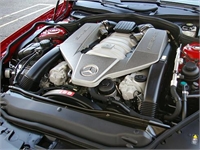
How To Repair A Car
Important Notice: Our web hosting provider recently started charging us for additional visits, which was unexpected. In response, we're seeking donations. Depending on the situation, we may explore different monetization options for our Community and Expert Contributors. It's crucial to provide more returns for their expertise and offer more Expert Validated Answers or AI Validated Answers. Learn more about our hosting issue here.
How to Repair A Car
To repair a car, you must have patience and reliable resources. Car repair problems are stressful regardless of how minor they are. With so many parts that could be malfunctioning on your vehicle, it is best not to assume. Although some repairs are better to leave to a professional, information on the Internet and advanced technology improves the ability to perform minor repairs at home. Repairing a car yourself can be frustrating, but the amount of money you will save is often worth the trouble. Before taking your car to a mechanic, attempt to troubleshoot the problem yourself. The fix may be easier than you think.
Things You’ll Need:
Step 1: Check the dashboard for any warning lights. All cars, old and new, implement a warning system to notify the owner when there is a malfunction in the engine. Cars contain check engine lights, oil sensors, temperature gages, and many other warning notifications.
Step 2: Examine the engine for any obvious issues. Inspect the fluids, battery terminals, and check for any disconnected electrical lines. Check the fuse box, located in the engine compartment or next to the brake pedal, for any blown fuses. The most common electrical problems in a car originate in the fuse box.
Step 3: Have your car checked by an automotive code reader. An automotive code reader is a device that is plugged into your car and reads the vehicle’s trouble codes. These codes can be referenced by matching it with a problem in the book included with the reader, or searched for on the Internet. The law requires that all cars, produced after 1996, contain this OBD (on board diagnostics) plug. This plug is normally located near the gas pedal. The reader has a cost of approximately $100 and can be purchased at any automotive store. Some automotive stores offer this service free of charge. If your vehicle was produced before 1996, refer to your owner’s manual to discover the process for reading the trouble codes.
Step 4: Diagnose your car problems with an online flow chart. Iftijams.com offers a free flow chart to aid in the diagnosis process. There are four chars available, each starting with a different problem. These problems are; breaks, engine overheating, starting problems, and engine and wheel noises. The flow charts are very useful and easy to use.
Step 5: Purchase your replacement parts and a repair manual. After you have discovered the underlying cause of your car problems. You can begin the process of repairing your car. If you have experience in car repairs, you will not need to purchase a manual. Beginners can acquire a manual wherever your replacement parts were purchased. Reliable manuals available, are produced by Chilton and Hayes.
Repairing a car takes tools, patience, and a lot of elbow grease. In most cases, it will also be a learning experience. Refer to your repair manual and if needed, create a diagram as you remove the parts of your car. Follow all the removal and replacement instructions and you will have your car repaired in no time.
Resources
http://ifitjams.com/